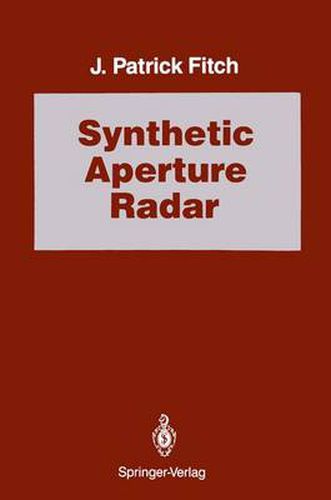Readings Newsletter
Become a Readings Member to make your shopping experience even easier.
Sign in or sign up for free!
You’re not far away from qualifying for FREE standard shipping within Australia
You’ve qualified for FREE standard shipping within Australia
The cart is loading…






This title is printed to order. This book may have been self-published. If so, we cannot guarantee the quality of the content. In the main most books will have gone through the editing process however some may not. We therefore suggest that you be aware of this before ordering this book. If in doubt check either the author or publisher’s details as we are unable to accept any returns unless they are faulty. Please contact us if you have any questions.
Radar, like most well developed areas, has its own vocabulary. Words like Doppler frequency, pulse compression, mismatched filter, carrier frequency, in-phase, and quadrature have specific meaning to the radar engineer. In fact, the word radar is actually an acronym for RAdio Detection And Rang ing. Even though these words are well defined, they can act as road blocks which keep people without a radar background from utilizing the large amount of data, literature, and expertise within the radar community. This is unfortunate because the use of digital radar processing techniques has made possible the analysis of radar signals on many general purpose digi tal computers. Of special interest are the surface mapping radars, such as the Seasat and the shuttle imaging radars, which utilize a technique known as synthetic aperture radar (SAR) to create high resolution images (pic tures). This data appeals to cartographers, agronomists, oceanographers, and others who want to perform image enhancement, parameter estima tion, pattern recognition, and other information extraction techniques on the radar imagery. The first chapter presents the basics of radar processing: techniques for calculating range (distance) by measuring round trip propagation times for radar pulses. This is the same technique that sightseers use when calculat ing the width of a canyon by timing the round trip delay using echoes. In fact, the corresponding approach in radar is usually called the pulse echo technique.
$9.00 standard shipping within Australia
FREE standard shipping within Australia for orders over $100.00
Express & International shipping calculated at checkout
This title is printed to order. This book may have been self-published. If so, we cannot guarantee the quality of the content. In the main most books will have gone through the editing process however some may not. We therefore suggest that you be aware of this before ordering this book. If in doubt check either the author or publisher’s details as we are unable to accept any returns unless they are faulty. Please contact us if you have any questions.
Radar, like most well developed areas, has its own vocabulary. Words like Doppler frequency, pulse compression, mismatched filter, carrier frequency, in-phase, and quadrature have specific meaning to the radar engineer. In fact, the word radar is actually an acronym for RAdio Detection And Rang ing. Even though these words are well defined, they can act as road blocks which keep people without a radar background from utilizing the large amount of data, literature, and expertise within the radar community. This is unfortunate because the use of digital radar processing techniques has made possible the analysis of radar signals on many general purpose digi tal computers. Of special interest are the surface mapping radars, such as the Seasat and the shuttle imaging radars, which utilize a technique known as synthetic aperture radar (SAR) to create high resolution images (pic tures). This data appeals to cartographers, agronomists, oceanographers, and others who want to perform image enhancement, parameter estima tion, pattern recognition, and other information extraction techniques on the radar imagery. The first chapter presents the basics of radar processing: techniques for calculating range (distance) by measuring round trip propagation times for radar pulses. This is the same technique that sightseers use when calculat ing the width of a canyon by timing the round trip delay using echoes. In fact, the corresponding approach in radar is usually called the pulse echo technique.